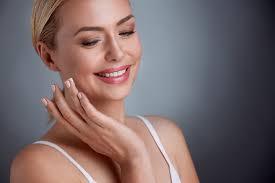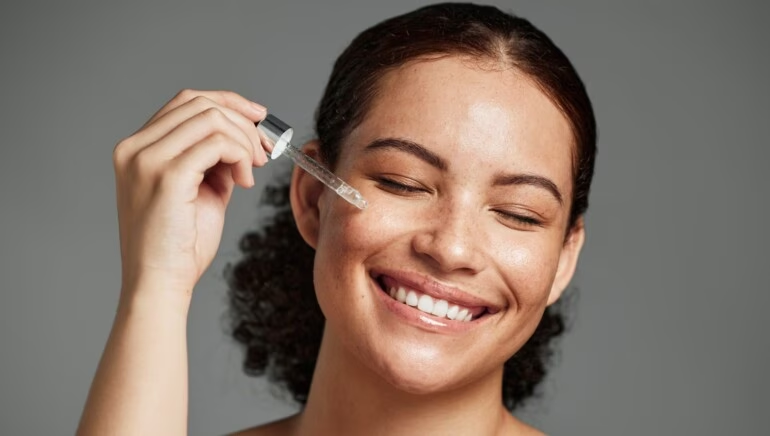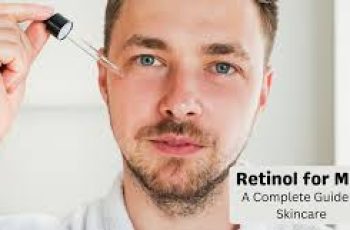
NAD in Skincare: Nicotinamide adenine dinucleotide
NAD is found in many new antiaging skincare products and supplements. How does NAD work, what are the benefits, and is it safe? I am a dermatologist in Miami who writes a lot about new antiaging ingredients used in skincare. NAD in skincare is a hot topic right now. This blog will discuss what NAD is and what data suggests it is good for preventing skin wrinkles and aging.
To find the best skincare products to prevent aging take our skin type quiz and learn what products and ingredients are best for your Baumann Skin Type.
What is NAD?
NAD, NAD+ , or NAD plus are all abbreviations for Nicotinamide Adenine Dinucleotide, a vital molecule that keeps our cells functioning optimally by helping them generate energy to power all cell functions such as making collagen, performing autophagy, and repairing DNA . NAD+ is a crucial coenzyme found in all living cells that plays a fundamental role in metabolic processes, particularly in the generation of energy. Understanding how NAD+ contributes to cellular energy requires a dive into the cellular respiration process, particularly the electron transport chain (ETC) and its role in ATP production, the energy currency of the cell.
As we age, our NAD+ levels decline, leading to reduced cellular health and visible signs of aging. This is why the new health trend is taking NAD+ supplements, injections, and using NAD+ in topical skincare products- mostly antiaging serums.
Is NAD the same as Vitamin B3
NAD and Vitamin B3
NAD+ (Nicotinamide Adenine Dinucleotide) has a direct and essential relationship with Vitamin B3, also known as niacin. This relationship is rooted in the biosynthesis of NAD+ itself, as Vitamin B3 serves as a precursor for the synthesis of NAD+. There are three main forms of Vitamin B3: niacin (nicotinic acid), nicotinamide (also known as niacinamide), and nicotinamide riboside. Each of these forms can be converted into NAD+ through distinct biochemical pathways within the human body, highlighting the critical role of Vitamin B3 in cellular energy metabolism and overall health.
NAD+ in Skincare
NAD+ plays a pivotal role in maintaining skin health by fueling cellular processes that repair DNA, generate energy, and fortify skin cells against stress and damage. The problem is that NAD is such a large molecule that it cannot penetrate into the skin. For this reason, in topical skincare NAD precursors must be used. This is why oral supplements and injections of NAD are more effective than topical products.
Applying NAD precursors directly to the skin may reduce the causes of skin aging and protect against environmental stressors.
Wrinkle Prevention
Topically applied NAD+ or its precursors can penetrate the skin to some extent, offering direct benefits by boosting cellular energy and promoting repair mechanisms. This can lead to improved skin texture, reduced appearance of fine lines and wrinkles, and enhanced overall skin health.
Benefits of NAD Precursors in Skincare
By enhancing cellular energy production, NAD+ enables skin cells to maintain optimal health, conduct necessary repairs more efficiently, and support the renewal process. This is particularly important for skin cells, as they are constantly exposed to external factors that can cause damage.
Skincare brands with NAD
Skincare Brands with NAD
We are in the process of independently evaluating these skincare brands that contain NAD precursors. Stay tuned to see if they meet our criteria.
Aramore
This skincare brand has NAD precursors. I have not finished testing it so I do not have an opinion about it yet.
NADERMA
This is the skincare brand launched by David Sinclair. It has NAD in it but I have not seen absorption studies to know if it can get into the skin.
NAD+ Supplements
Oral supplements containing NAD+ precursors, such as nicotinamide riboside or nicotinamide mononucleotide, can increase the body’s NAD+ levels, supporting skin health from within. These precursors are converted into NAD+ in the body, bolstering the skin’s ability to repair and regenerate.
Safety of supplements
Research indicates NAD+ supplementation is generally safe, with minimal side effects. However, it’s crucial to consult a healthcare professional before starting any new supplement regimen.
NAD+ Injections
NAD+ injections involve the direct administration of Nicotinamide Adenine Dinucleotide into the bloodstream via an intravenous (IV) drip. This method bypasses the digestive system, potentially offering a more immediate and potent way to elevate NAD+ levels in the body compared to oral supplements. By injecting NAD+ directly into the bloodstream, it is theorized that this coenzyme can more efficiently reach cells throughout the body, enhancing cellular functions almost immediately. NAD+ plays a pivotal role in metabolic processes, including the conversion of nutrients into energy, DNA repair, and supporting cellular health.
Benefits of NAD injections
Benefits of NAD Injections
Boosting NAD+ levels directly may amplify these processes, potentially offering various health benefits such as:
Enhanced Energy Production: NAD+ is critical for mitochondrial function, the powerhouses of cells, which generate energy. Higher levels of NAD+ can potentially lead to improved energy levels.
Anti-Aging Effects: Given NAD+’s role in DNA repair and cell health, injections may contribute to slowing down aging processes at a cellular level, potentially mitigating age-related decline.
Improved Cognitive Function: Some evidence suggests that boosting NAD+ levels could support brain health, enhancing cognitive function and possibly offering benefits for neurodegenerative diseases.
Addiction and Recovery Support: There’s emerging interest in using NAD+ therapy to aid in addiction recovery, with some clinics offering it as part of detoxification protocols, claiming it can reduce withdrawal symptoms and cravings.
Safety of Injections
Use of NAD is very new and not yet mainstream so we do not know a lot about it. This is what I could find out about safety of IV infusions:
Scientific Evidence: While promising, the body of rigorous scientific research on the efficacy and long-term safety of NAD+ injections is still growing. More studies are needed to firmly establish their benefits and optimal dosing protocols.
Cost and Accessibility: NAD+ injections can be expensive and are not widely available in traditional medical settings. They are more commonly found in specialized clinics and wellness centers.
Side Effects: Although generally considered safe, some individuals may experience side effects from NAD+ injections, such as discomfort at the injection site, nausea, fatigue, and headaches. The procedure should be performed under medical supervision.
Benefits of NAD+
NAD has too many benefit to count because it is such an important molecule.
The skin benefits of NAD include:
Smoother skin
Radiant skin
Glowing skin
Even skin tone
Healthy skin
Resistant skin
Importance of NAD in health
Importance of NAD in Health
The conversion of Vitamin B3 into NAD+ is vital for numerous cellular processes, including energy production, DNA repair, and cell signaling. NAD+ acts as a coenzyme in redox reactions, crucial for mitochondrial function and ATP production. It also plays a role in the activation of poly(ADP-ribose) polymerases (PARPs) and sirtuins, which are involved in DNA repair and cellular stress responses, respectively.
NAD helps many different skin processes as it has a role in numerous pathways. You need NAD to:
Repair DNA mutations
Make collagen
Make proteins
Regulate the immune system
Make new skin cells
Mediate inflammation
Heal wounds
Aging
As we age, NAD levels naturally decline, leading to a decrease in cellular energy production, reduced capacity for DNA repair, collagen synthesis, decreased autophagy, and diminished skin cell renewal. This contributes to the visible signs of aging, such as wrinkles, loss of elasticity, and dullness.
The science of anti-aging has increasingly focused on NAD+ due to its critical role in cellular metabolism, stress resistance, and DNA repair—all factors that influence the aging process. Studies have shown that boosting NAD+ levels can extend the lifespan of yeast, worms, and mice by improving mitochondrial function and increasing resistance to stress. In human skin, increasing NAD+ levels could similarly help to slow the aging process, reduce age-related skin conditions, and improve skin health and appearance.
Science of NAD
Science of NAD+
NAD+ is central to the metabolic processes that convert food into energy at the cellular level. NAD acts as an electron carrier in the mitochondrial electron transport chain, facilitating the production of ATP (adenosine triphosphate), which is the primary energy currency of the cell. This energy is vital for various cellular activities, including the repair of damaged DNA, which is a common issue in skin cells exposed to UV radiation and other environmental stressors.
By enhancing cellular energy production, NAD+ enables skin cells to maintain optimal health, conduct necessary repairs more efficiently, and support the renewal process. This is particularly important for skin cells, as they are constantly exposed to external factors that can cause damage.
Biosynthesis
NAD is such an important molecule in the body that it is made several different ways.
Niacin (Nicotinic Acid): Niacin can be converted into NAD+ through a series of enzymatic reactions that begin with its conversion to nicotinic acid mononucleotide (NAMN). Following this, NAMN is converted into nicotinic acid adenine dinucleotide (NAAD), and finally, NAAD is amidated to form NAD+. This pathway, known as the Preiss-Handler pathway, is one of the primary routes for NAD+ biosynthesis from dietary Vitamin B3.
Nicotinamide (Niacinamide): Nicotinamide is another form of Vitamin B3 that can be directly used in the synthesis of NAD+ without causing the “niacin flush,” a common side effect of niacin. Nicotinamide is converted into nicotinamide mononucleotide (NMN) by the action of nicotinamide phosphoribosyltransferase (NAMPT), and NMN is subsequently adenylated to form NAD+. This salvage pathway is crucial for recycling nicotinamide back into NAD+ and maintaining NAD+ levels within cells.
Nicotinamide Riboside: Nicotinamide riboside (NR) is a more recently recognized Vitamin B3 derivative that serves as an efficient precursor to NAD+. NR is converted into nicotinamide mononucleotide (NMN) by the enzyme NR kinase, and then NMN is converted into NAD+. Due to its efficiency in raising NAD+ levels, NR has garnered significant interest as a dietary supplement aimed at boosting NAD+ for health and longevity.
Research on NAD
Research
A 2023 study (3) investigated the protective effects of NAD+ against skin damage caused by UVC radiation. The research, conducted on a mouse model, gave insights into how NAD+ can be a potent agent in protecting the skin from the adverse effects of UVC radiation, which is a critical concern due to the depletion of the atmospheric ozone layer.
Key findings from this study include:
NAD+ Reduces UVC-Induced Skin Damage : Administration of NAD+ was found to significantly decrease the damage caused by UVC radiation to the skin. This was measured using the skin’s green autofluorescence (AF) as a biomarker, which correlated with the extent of skin damage.
Oxidative Stress Reduction : NAD+ significantly attenuated the decreases in levels of mitochondrial superoxide dismutase and catalase induced by UVC, indicating a reduction in oxidative stress.
Inflammation Control : The study observed a significant reduction in UVC-induced increases in the level of cyclooxygenase (COX) 2, a marker of inflammation, following NAD+ administration.
DNA Damage Mitigation : NAD+ administration was also found to profoundly attenuate the increase in double-strand DNA (dsDNA) damage caused by UVC radiation.
Apoptosis Reduction : Finally, NAD+ significantly attenuated the UVC-induced decreases in the ratios of Bcl-2/Bax, an index of apoptosis, showcasing its potential in reducing cell death induced by UVC.
These findings suggest that NAD+ has great potential as a protective agent against UVC-induced skin damage through multiple pathways, including reducing oxidative stress, controlling inflammation, mitigating DNA damage, and reducing apoptosis. Additionally, the study supports the use of skin’s green autofluorescence as a biomarker for predicting UVC-induced skin damage, offering a non-invasive method for early diagnosis and intervention.
This study highlights the multifaceted role of NAD+ in skin health, especially in the context of environmental stressors such as UVC radiation, underscoring its potential in dermatological applications and skin care formulations.
Looking for the best antiaging skincare products for your skin? Take the quiz and we can help!


